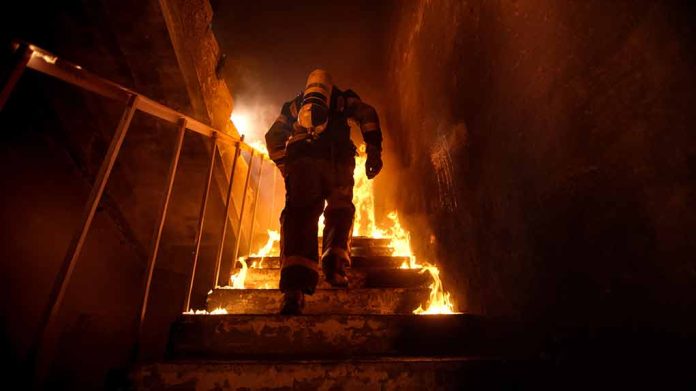
California’s use of prison inmates for firefighting is sparking heated debate with deep-rooted implications.
At a Glance
- Nearly 950 California prison inmates are supporting firefighting efforts in Los Angeles due to massive wildfires.
- The inmate program offers minimal pay of $10.24 per day and limited training, despite high risks involved.
- Governor Gavin Newsom has signed laws to improve post-incarceration job opportunities for inmates.
- Critics view the program as exploitative, while supporters see it as rehabilitation and meaningful work.
Massive Role of Inmate Firefighters
The Conservation (Fire) Camp Program utilizes nearly 950 prison inmates in California to assist with firefighting efforts, particularly in combating wildfires in Los Angeles. Inmates engage in tasks like cutting fire lines and removing fuel from structures. Since January 7, these fires have burned thousands of acres, resulting in the tragic loss of 24 lives, with 16 individuals still missing. While some see this as meaningful work, others raise concerns about the low pay and potential exploitation.
The scope of the firefight is overwhelming. The Palisades and Eaton wildfires alone have destroyed nearly 40,000 acres and over 12,000 structures, with only partial containment reported. The National Weather Service has issued critical red flag warnings, exacerbated by high winds, which are furthering these devastating conditions. Despite the inmates’ efforts, the need for more support remains critical. The economic impact of these wildfires is projected at a staggering $135-150 billion.
The Controversies: Pay and Training
California prison inmates receive a mere $10.24 per day for their perilous work, which falls well below the state’s minimum wage. Moreover, these inmates also face challenges when seeking firefighting jobs after their release, as criminal records often hinder employment opportunities. Governor Gavin Newsom has introduced legislation aimed at improving job prospects for former inmates, hoping to provide avenues for meaningful employment post-incarceration. Still, the criticisms remain strong, focusing on the program’s insufficient pay and alleged inadequate training.
The program, dating back to 1915, remains voluntary. Eligible inmates are screened for physical and mental fitness, good behavior, and must have less than eight years remaining on their sentences. The risks enlisted in this program are significant, including injuries like cuts, broken bones, and smoke inhalation, enhancing the debate on whether the benefits outweigh the dangers involved.
Governor Newsom’s Initiatives
Governor Gavin Newsom’s recent visit to the program‘s participants culminated in the signing of a new law to enhance their career opportunities in firefighting after release. This law aims to facilitate these individuals’ transition into the firefighting profession, acknowledging their experience accrued during incarceration. Overall, the Governor’s efforts are seen as a step toward addressing some systemic issues present within the program.
The Conservation (Fire) Camp Program’s support is incontrovertible in the ongoing firefighting efforts. With nearly 14,000 personnel, 1,400 fire engines, and 84 aircraft involved, this coalition includes efforts from multiple states, Canada, Mexico, and potentially Ukraine. The California inmates indeed play an instrumental role in this complex operation, reminding us of the essential value of teamwork during crises despite the contentious loops around the program.





